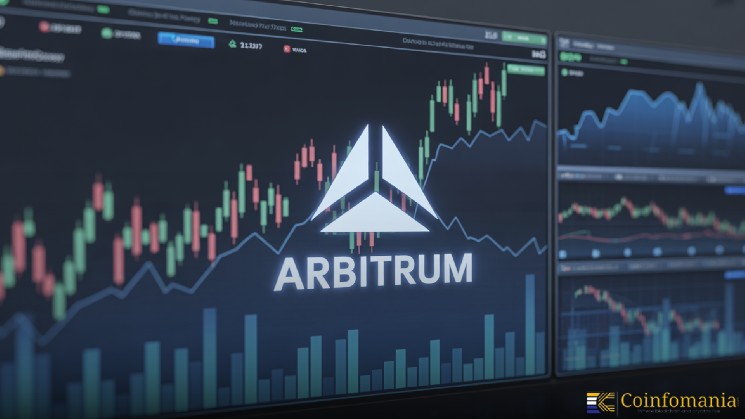Listen to the article
Arbitrum has once again taken the lead, reaching a six-month record high in trading volume on a decentralized exchange (DEX). The uptick in trading volume by DEX traders not only reflects a growing resurgence in decentralized trading more broadly, but it is a sign of overall optimism in the market, as well as an expanding decentralized finance (DeFi) ecosystem overall. Over the past few months, the proven liquidity stream and user engagement have solidified Arbitrum’s status as one of the leading Layer 2 networks for decentralized exchanges.
The 6-month record in DEX dominance is a major milestone for the ecosystem because it clearly expresses that traders are regaining confidence in Arbitrum’s DeFi architecture. The explosion in trading volume has more to do with a maturing ecosystem led by new protocols, improved scaling, and better transaction speeds, than just sheer token speculation. For the DeFi ecosystem, this news means that Arbitrum has taken one more step toward becoming one of the leader’s in on-chain trading activity.
As institutional and retail traders pivot toward faster and cheaper blockchain options, Arbitrum’s Layer 2 network is on the verge of completing the transition to becoming one of the premier decentralized liquidity hubs. It also reinforces how innovation and real-world use cases can leverage decentralized finance on Arbitrum to generate sustainable traction in an ever-changing crypto landscape.
🔥 NEW: $ARB DEX Volume hit a new 6-month ATH. pic.twitter.com/MtrQVja5XG
— Marc Shawn Brown (@MarcShawnBrown) October 26, 2025
Rising On-Chain Activity Highlights Strength of the Arbitrum Ecosystem
The six month high in Arbitrum DEX volume highlights that the on-chain fundamentals of the network are still strengthening. Daily trade numbers are consistent across the leading DEXs (i.e., GMX, Uniswap (Arbitrum), and Camelot) where users are able to benefit from the lower gas fees and faster confirmation times.
This growth in trade volume can also be tied to the rise of cross-chain liquidity solutions and the rise of yield-generating protocols that have increased Arbitrum’s attractiveness for traders who want efficiency and flexibility in decentralized markets. Furthermore, the user-friendly experience of the Layer 2 ecosystem and high scalability are appealing both new and veteran DeFi users.
Market Factors Driving Arbitrum’s DEX Volume Surge
There are several reasons for the current traffic increase in Arbitrum DEX volume. To begin, following a quieter third quarter, general market sentiment has improved, allowing traders to enter the market once again. Naturally, as liquidity pools deepen and trading pairs grow, volume spikes should follow. Furthermore, ongoing ecosystem incentives for Arbitrum – including liquidity mining programs and governance rewards – have dramatically increased interest. Effective and valuable utility from tokens has led to more participation from liquidity providers and traders, as well as excitement from new project launches and integrations across the ecosystem of DeFi growth on Arbitrum.
Ultimately, the ongoing development of Layer 2 scaling solutions has been critical to the increase in trading activity; greater speed and lower costs of transactions have reduced the friction associated with high-frequency trading and yield opportunities. Overall, these factors have contributed to the ideal environment for consistent trading amongst decentralized exchanges.
Conclusion
The recent 6-month ATH in Arbitrum DEX volume reflects more than just a number; it represents confidence, resilience, and innovative spirit in the DeFi ecosystem. Now that an increasing number of users are moving from centralized exchanges to decentralized options, the liquidity will be captured on networks such as Arbitrum.
Looking further out, institutional interest, user experience, and ongoing Layer 2 development could further accelerate the DeFi growth on Arbitrum. If this trend continues, Arbitrum will not only keep leading the Layer 2 networks, but possibly establishes verifiable efficiency and scalability standards across DeFi projects.



